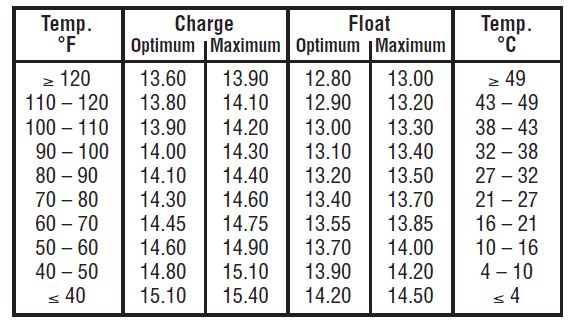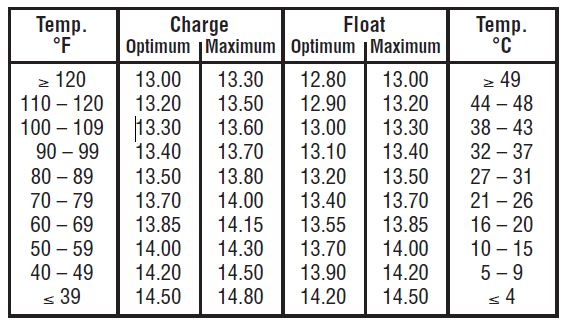What is the reason behind the thermal runaway phenomena of the VRLA battery?
27 Aug 2021
Thermal runaway is a phenomenon where the current flowing through the cell or battery on charge or overcharge causes the cell temperature to rise, which increases the current with a further rise in temperature.
The appropriate charge voltage depends on the battery temperature (see below tables). A warmer battery requires a reduced voltage. If the voltage is not reduced, current accepted by the battery increases. When the current increases, the heating increases. This can continue in a loop feeding on itself with the battery temperature and charging current rising to destructive levels.
Gel batteries are much less susceptible to thermal runaway than
AGM batteries. Batteries may become more susceptible with increasing age. Without a recombination reaction, flooded batteries convert most excess charging energy to gas, not heat. This makes them almost immune from the thermal runaway.
AGM Charge and Float Voltages at Various Temperature Ranges:

GEL Charge and Float Voltages at Various Temperature Ranges:

Thermal runaway can be prevented with:
• Temperature compensation monitoring at the battery—not at the charger.
• Limiting charging currents to appropriate levels (see the tables above).
• Allowing for adequate air circulation around the batteries.
• Using timers or Ampere-hour counters.
• Using smart chargers that recognize the signature of a thermal runaway event which will shut the charger down.


